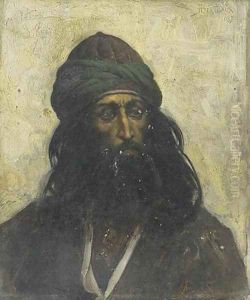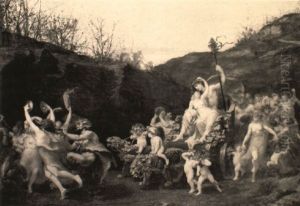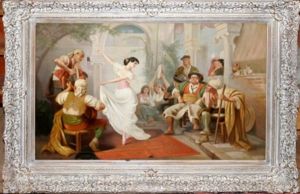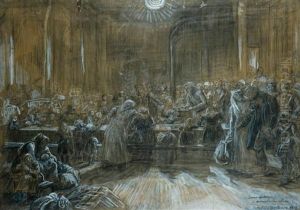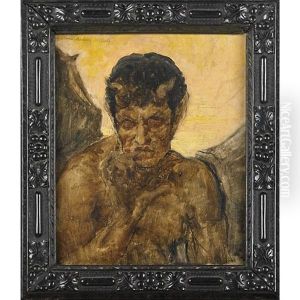Hippolyte-Dominique Berteaux Paintings
Hippolyte-Dominique Berteaux was a French painter, born in Saint-Quentin, Aisne on December 9, 1843. He is often associated with genre scenes, historical and religious works, and was known for his classical style of painting. Berteaux came of age during a period of art that was defined by a transition from traditional academic styles to the emerging Impressionist movement. Despite the shifting artistic tastes of the era, Berteaux maintained a commitment to the academic standards and methods he had learned.
Berteaux's education in the arts began at the École des Beaux-Arts in Paris where he studied under renowned academic painters such as Alexandre Cabanel. This training ensured that he was well-versed in the techniques and subjects that were highly valued by the art institutions of the time. He was a product of his education and remained largely unaffected by the avant-garde movements that were gaining popularity during his career.
One of the hallmarks of Berteaux’s work was his attention to detail and his ability to capture the essence of his subjects with precision and clarity. His paintings often depicted scenes from history, mythology, and religion, showcasing his skill in capturing the human form and his use of rich, vibrant colors.
Although Berteaux may not be as widely remembered as some of his contemporaries, his dedication to the academic style won him a measure of success and recognition during his lifetime. He exhibited his works regularly at the Paris Salon, a prestigious annual art exhibition in France, where he received several accolades for his contributions.
Hippolyte-Dominique Berteaux passed away on May 29, 1928, in Paris. Over the decades, tastes in art have continued to evolve, and while Berteaux's adherence to academic norms may have caused him to be overshadowed by the more revolutionary artists of his time, his work remains a testament to the skills and traditions of the academic art world of the 19th century.
